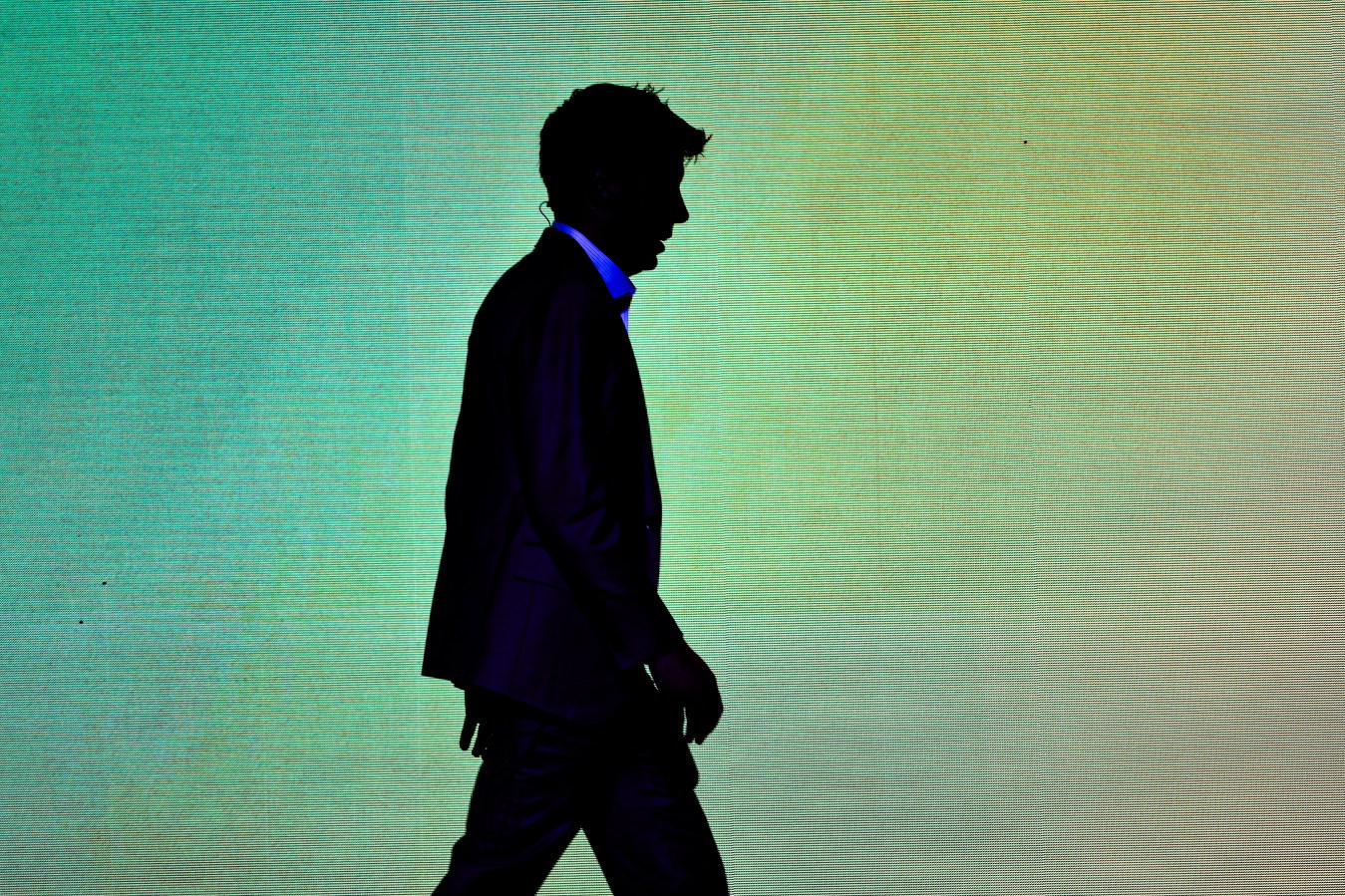During its annual Made By Google event, the tech giant unveiled a slew of new devices, from its new Pixel Watch 3 to the Pixel Buds Pro 2. Its new phone lineup—the Pixel 9 series—which includes the Pixel 9 Pro and the Pixel 9 Pro Fold, stole the show. Ahead of the Pixel event and launch, I went hands-on with both mobile devices for 60 minutes to learn more about the new features and upgrades in each device.

Though I only got to spend a short time with these devices, one model in particular left me excited for the new lineup. Read on for my thoughts on the Google Pixel 9 Pro and the Google Pixel 9 Pro Fold.
The first thing I need clarify here: This year, there are not one, but two different Pixel 9 Pro models. Size here makes the difference. The Pixel 9 Pro is 6 inches high–the exact same size as another new model, the Google Pixel 9–while the Pixel 9 Pro XL measures 6.4 inches, similar in size to its predecessor, the Google Pixel 8 Pro.

Holding one in each hand, the weight doesn’t feel that different between the two. But I preferred the regular Pixel 9 Pro versus the Pixel 9 Pro XL–it feels more comfortable to hold in my hand. Personally, I’ve never understood why a flagship candy bar or slab phone needs to have such a beefy heft. The fact that Google made the decision to keep the specs equal while offering two options is one of the smartest decisions from any mobile company in recent years. As a member of the small hands club, all I can say is: took long enough.
Another welcome change? The phone build. Last year, the cases on the Google Pixel 8 and the Pixel 8 Pro felt as slippery as eels; more than once during my testing of the Google Pixel 8, I worried I was going to drop and break the device because it felt so slick. The Pixel 9 Pro and Pro XL’s case are still composed of the Corning Gorilla Glass Victus 2, with a 100% recycled aluminum “satin metal” frame, but it has a much better grip. Resting it in my palm, I angled my hand to the side—the device didn’t slip out of my hand. Google representatives on site told me that it’s been engineered to be stronger than before, but I’m a klutz. Even with this, though, I would still put a case on it for peace of mind.

In flipping through apps, the Google Tensor G4 chip and large 16GB of RAM felt smooth and responsive. And yes, the gigs of RAM is correct: The Pro and Pro XL phones add an extra 4GB of RAM into the device, presumably for the influx of AI integrations and Google Gemini. It’s worth noting that it’s 4GB more than its main Android competitor, the Samsung Galaxy S24 Ultra, which begs the question of exactly how demanding the AI on this device is that it requires more GB (more on that in a minute). How much AI is too much on a device? While I couldn’t test any games on the device, I expect it to make gameplay and multitasking with Google Gemini faster and more responsive.
Most of the AI features come with the cameras, which feature a brand-new design. Physically, they jut out from the back, but don’t worry that the lens will rest on a table or surface—it rests on a slight lip so everything remains protected. I got to test the cameras, and while I couldn’t take any images off the device, I snapped images on the the new 42MP front camera and the rear lenses. They looked sharp and detailed, but it’s the aforementioned new AI features that caught my attention.
Google unveiled Add Me, a new feature that allows you to add the photographer into a group photo for some extra fun. I used myself as a test dummy for both the subject and the photographer, and it’s worth noting that you have to line it up just right, otherwise it looks off. When I stood too close to myself, the Add Me version of myself overlapped the original image. Still, I had a blast going hands-on with this feature; it’s a great addition to the Google Pixel 9 devices, and I can imagine it’ll be used a ton, myself included.

Another AI feature, Magic Editor, made for some exciting scenarios. During a demo, a Google representative showed me an image of a car on a highway. With a few taps in Magic Editor, she transformed that same image into a car driving through a churning river. This feature could be used to add butterflies, princess castles and gorgeous mountains in the background of your images. I didn’t see any watermarking, which, as I mentioned in my review of the Samsung Galaxy Z Flip 6, poses the problem: How can you tell if something is AI if you can alter or remove anything that indicates it’s AI-generated? And again, this was demo, so it may not hold up in real-life applications, and I’m excited to test this further.
No matter what size you choose, the new Google Pixel 9 Pro, based on my hands-on, feels like a solid upgrade compared to the Google Pixel 8 Pro that’s worthwhile, especially if you’re coming from the Google Pixel 6 Pro or the Google Pixel 7 Pro. The Google Pixel 9 Pro comes in Porcelain, Obsidian, Hazel and Rose Quartz and starts at $999. The Pixel 9 Pro XL also comes in Porcelain, Obsidian, Hazel and Rose Quartz, but its starting point is a little higher at $1,099. You can preorder now and it ships August 22.
The first generation of the Google Pixel Fold wasn’t perfected right out of the gate. There were issues with the hinge not unfolding to the full 180 degrees and, personally, while testing the device, it felt so darn heavy—it was like carrying a brick,
Google addressed both of my concerns this go-round. The new Google Pixel 9 Pro Fold carries a new, “fluid friction hinge,” that’s supposedly stronger than before. I asked a Google representative what exactly the name meant and was told that the “fluid friction” refers to the “snap” on the hinge. When opened all the way, the hinge “snaps” into that 180-degree spot. It feels very satisfying to open and close the new device compared to its predecessor–and it’s made of stainless steel, not aluminum, like the frame. This thing is built to last.

The other issue I had—the weight–has also been addressed. The Google Pixel Fold weighed 283 grams; the new model is 257 grams. You can feel the difference, but it’s still not the lightest booklet-style foldable on the market by far. The Samsung Galaxy Z Fold 5 and Fold 6 are 257 and 239 grams, respectively, and the Oneplus Open debuted last year at 239 grams. Still, it’s a step in the right direction for a second-gen device, and that 26 grams reduction is noticeable.

The display also got a swanky upgrade, one that’s noticeable compared to the first-gen Fold. It’s now the largest–and brightest–Google display, clocking in at a massive 8 inches of display space at 2,700 nits, up from 7.6 inches and 1,550 nits. It looks and feels huge when unopened, but the grip is still comfortable. I could see mobile gamers jumping on this display, especially with that extra 4GB RAM that’s also present in this build. Another feature I liked was that when you snap it to the 90-degree angle, if you’re watching a video, the device automatically places the video in the top portion of your screen. There’s no lag, and you can just fold it, place it on a surface and seamlessly enjoy your content.

The Add Me and Magic Editor features also come with the Google Pixel 9 Pro Fold, along with minor upgrades to the ultrawide camera (10.8, up from 10.5) and the front lens (10MP, up from 9.5MP). To be fair, the Google Pixel Fold had one of the strongest camera sets on the market before this, and I expect this streak to continue once I can further test the device.
But the new Fold comes with another feature designed for parents: Made You Look. The premise is simple: When you want to take a picture of your kids, you can turn on Made You Look, and the exterior screen flashes cute animations of chickens and fish to get them to laugh. As your child begins to smile, AI registers the smile and adds silly movements, like the fish jamming himself onto the front of the screen, to get them to laugh. Then, since they’re smiling, you can snap images on the inner display. It’s cute, and based on the demo I experienced, I expect parents will clamor for this feature.

But based on my hands-on, I still have one gripe. Despite its increased RAM and a larger, brighter display, it still doesn’t have built-in stylus compatibility. I would have loved to have seen this implemented on this device, especially since there are only a small handful of devices that offer this currently. You can use Keep Notes for typing/swiping your notes, so if you can type and take notes on the go, you’ll be fine. But for folks like me, who prefer to scribble notes on the go, you’re out of luck.
Despite this shortfall, the Google Pixel 9 Pro Fold is a solid mobile device based on my hour with the device. It also only comes in two colors: Porcelain and Obsidian. And, of course, with the dual screens comes that higher price tag at $1,799, which is on par with its other booklet-style foldable competitors. While you can preorder now, shipping begins September 4, and the $1,799 price tag starts with 256GB of storage, but you can go up to 512GB.
My Expertise
As the consumer tech and electronics editor at Forbes Vetted, I’ve been covering tech for over five years. In addition to working with home entertainment such as testing the best gaming TVs, I have also tested most of the latest mobile devices on the market. I’ve tested the Samsung Galaxy Z Flip 5, the Asus ROG 8, the Google Pixel 8, the Apple iPhone 15 Pro and many more. Most recently, I tested the Samsung Galaxy Z Flip 6, the latest clamshell-style foldable phone from Samsung.
My time testing phones focuses on everyone, from the casual user to the dedicated mobile gamer who needs the best device for those long-haul Call of Duty marathon sessions. For this story, because it was a hands-on story and not a full review, I focused on the new AI integrations Google added into the new Pixel 9 series lineup, including Add Me and Made You Look.
This story was originally published on forbes.com and all figures are in USD.
Look back on the week that was with hand-picked articles from Australia and around the world. Sign up to the Forbes Australia newsletter here or become a member here.


